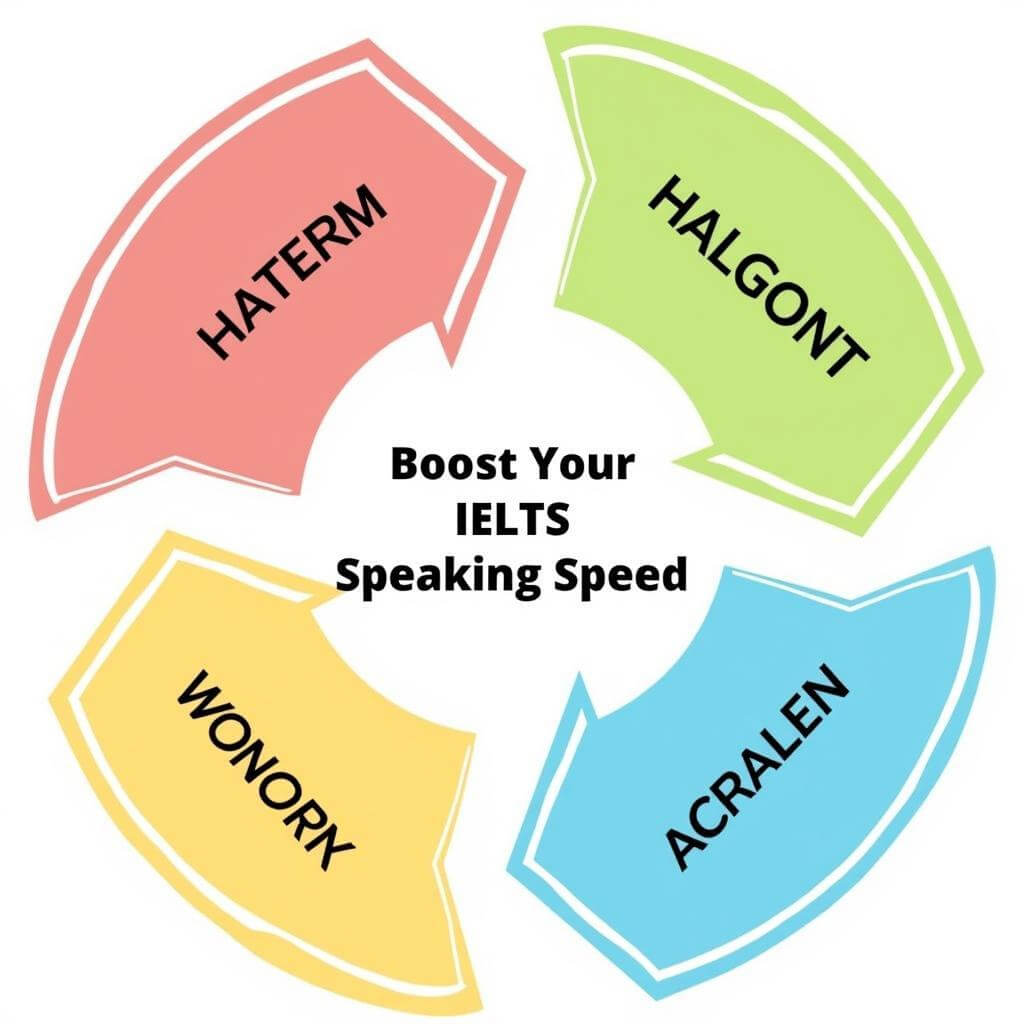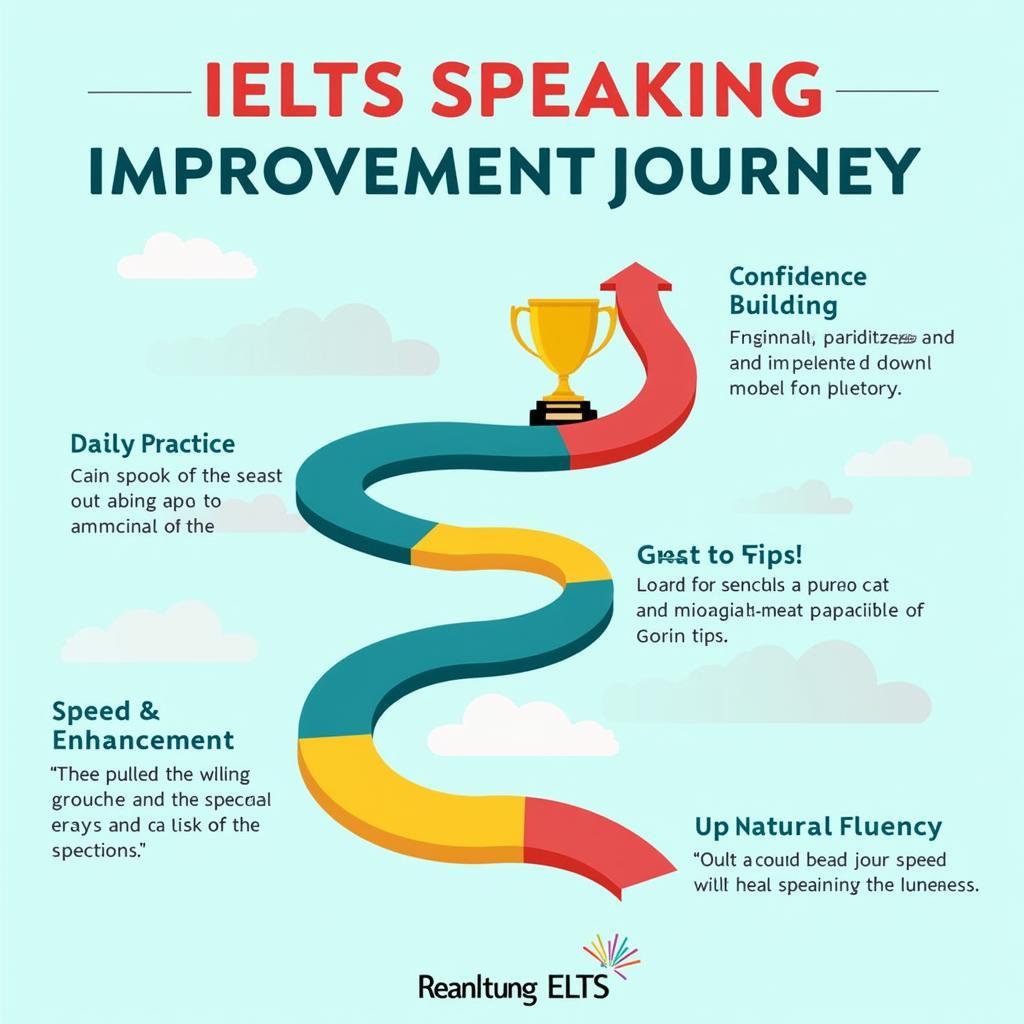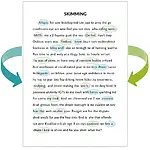Enhancing your speaking speed naturally is a crucial skill for IELTS success. As an IELTS expert, I’ve observed that many test-takers struggle with this aspect, often feeling rushed or stumbling over their words. However, with the right techniques and consistent practice, you can significantly improve your speaking speed while maintaining clarity and fluency.
Understanding the Importance of Natural Speaking Speed in IELTS
Before diving into strategies, it’s essential to recognize why natural speaking speed matters in the IELTS test. A balanced pace not only demonstrates language proficiency but also ensures that you can express your ideas fully within the given time constraints. How to maintain fluency in part 3 is particularly crucial, as this section often requires more complex responses.
The Impact of Speaking Speed on IELTS Scores
Examiners assess your fluency and coherence, which are directly influenced by your speaking speed. A natural, steady pace can positively affect your overall band score, while speaking too slowly or too quickly may lead to lower marks.
Effective Techniques for Improving Speaking Speed Naturally
- Practice Regular Tongue Twisters
- Engage in Shadow Speaking
- Record and Analyze Your Speech
- Participate in English Conversations Daily
- Read Aloud Progressively Faster
The Power of Tongue Twisters
Tongue twisters are an excellent tool for improving articulation and speed. Start with simpler ones and gradually increase difficulty. For example:
- “She sells seashells by the seashore”
- “Peter Piper picked a peck of pickled peppers”
Practice these daily, focusing on clarity before increasing speed.
 Tongue Twisters for IELTS Speaking Practice
Tongue Twisters for IELTS Speaking Practice
Shadow Speaking: A Powerful Mimicry Technique
Shadow speaking involves repeating what you hear immediately after a native speaker, mimicking their pace and intonation. This technique helps you internalize natural speech patterns.
- Choose a short audio clip from a native English speaker
- Listen to the clip once to understand the content
- Play it again, this time repeating each phrase immediately after you hear it
- Focus on matching the speaker’s speed and intonation
- Gradually increase the difficulty and length of the audio clips
Leveraging Technology for Speed Improvement
In today’s digital age, numerous apps and online resources can aid in improving your speaking speed. Podcasts, language exchange apps, and speech-to-text software are valuable tools in your IELTS preparation toolkit.
Recommended Apps and Resources
- Speakly: Focuses on practical vocabulary and real-life situations
- ELSA Speak: Provides immediate feedback on pronunciation and fluency
- TED Talks: Offers a wide range of topics for shadow speaking practice
Dr. Emily Richards, a renowned IELTS coach, emphasizes:
“Consistent exposure to native-like speech patterns through technology can dramatically improve a learner’s speaking speed and overall fluency.”
Overcoming Common Challenges in Speaking Speed
Many IELTS candidates face similar obstacles when trying to increase their speaking speed. Let’s address some of these challenges and their solutions:
1. Fear of Making Mistakes
Solution: Embrace errors as part of the learning process. Focus on communicating your ideas rather than achieving perfection.
2. Limited Vocabulary
Solution: Expand your vocabulary through thematic learning. Group words by topics relevant to IELTS speaking tasks.
3. Lack of Confidence
Solution: Build confidence through regular practice. Improving speaking skills through debates can be an excellent way to boost both speed and confidence.
 Confident IELTS Speaker Practicing
Confident IELTS Speaker Practicing
Integrating Speed Improvement into Your IELTS Preparation Routine
To effectively improve your speaking speed, incorporate these practices into your daily IELTS preparation:
- Dedicate 15-20 minutes daily to speed-focused exercises
- Alternate between different techniques to maintain engagement
- Set realistic, incremental goals for speed improvement
- Track your progress through regular self-assessment
Creating a Balanced Practice Schedule
| Time | Activity | Focus |
|---|---|---|
| 10 min | Tongue twisters | Articulation and speed |
| 15 min | Shadow speaking | Intonation and pace |
| 20 min | Topic discussion | Fluency and vocabulary usage |
| 15 min | Self-recording and analysis | Self-awareness and improvement |
The Role of Stress Management in Speaking Speed
Anxiety can significantly impact your speaking speed during the IELTS test. How to stay calm during IELTS speaking test is crucial for maintaining a natural pace. Practice deep breathing exercises and positive visualization techniques to manage stress effectively.
Sarah Thompson, an IELTS examiner with 15 years of experience, notes:
“Candidates who can control their nerves often demonstrate more natural speaking speeds and clearer articulation, leading to better overall performance.”
Fine-tuning Your Speaking Speed for Different IELTS Tasks
Each part of the IELTS Speaking test requires a slightly different approach to speed:
- Part 1: Maintain a brisk, conversational pace
- Part 2: Balance detail with fluency in your long turn
- Part 3: Adjust speed to accommodate more complex ideas
How to develop fluency for IELTS speaking without pauses is particularly important for seamless transitions between ideas in Part 3.
Conclusion: Embracing Natural Speed Improvement
Improving speaking speed naturally for IELTS is a journey that requires patience and consistent effort. By incorporating these strategies into your daily practice and focusing on natural language production, you’ll see significant improvements in your fluency and overall speaking performance. Remember, the goal is not to speak as fast as possible, but to achieve a natural, comfortable pace that allows you to express your ideas clearly and confidently.
Strategies for improving overall fluency should be your ultimate aim, with speed being just one component of your IELTS speaking success. Embrace the process, stay consistent, and watch your IELTS speaking skills soar to new heights.
 IELTS Speaking Improvement Journey
IELTS Speaking Improvement Journey
FAQ: Improving Speaking Speed Naturally for IELTS
-
How fast should I speak in the IELTS test?
Aim for a natural, conversational pace. Speaking too quickly can affect clarity, while speaking too slowly may impact fluency scores. Find a balance that allows you to express your ideas comfortably and clearly. -
Can I use filler words to maintain fluency while thinking?
Use filler words sparingly. While they can help maintain flow, overuse may negatively impact your score. Instead, focus on developing strategies to reduce pauses and improve overall fluency. -
How long should I practice speaking each day to improve my speed?
Consistency is key. Aim for at least 30 minutes of focused speaking practice daily, incorporating various techniques like shadow speaking and tongue twisters. -
Will speaking faster automatically improve my IELTS score?
Not necessarily. While improved speed can contribute to better fluency, it’s equally important to maintain clarity, use appropriate vocabulary, and structure your responses well. -
Is it better to speak slowly and accurately or quickly with some mistakes?
Strive for a balance. It’s better to speak at a moderate pace with good accuracy than to rush and make numerous errors. Focus on clarity and coherence while gradually increasing your speed. -
How can I improve my thinking speed in English to match my speaking speed?
Regular practice in English, including activities like debates and discussions on various topics, can help improve your ability to think and respond quickly in English. -
Are there any specific breathing techniques to help with speaking speed and fluency?
Yes, diaphragmatic breathing can help control your pace and reduce anxiety. Practice taking deep breaths from your diaphragm before and during speaking to maintain a steady rhythm.


